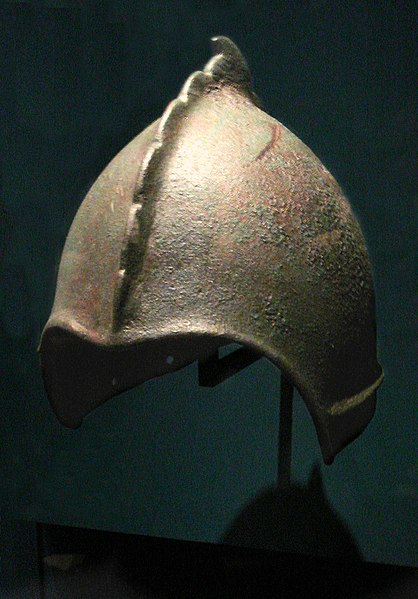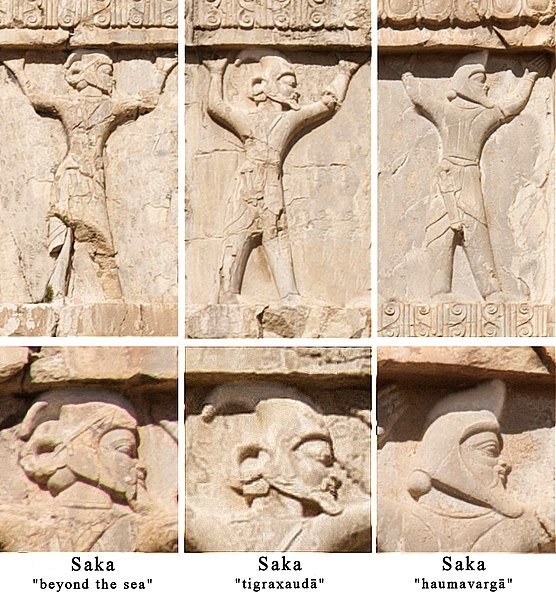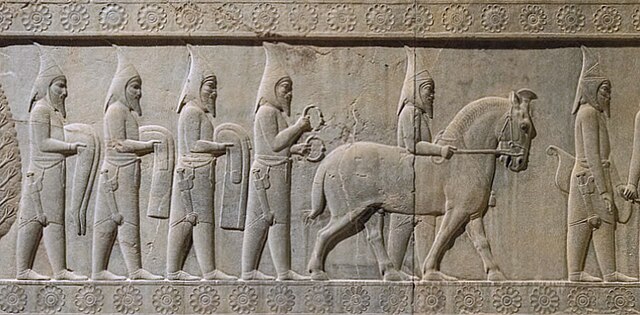The Pazyryk burials are a number of Scythian (Saka) Iron Age tombs found in the Pazyryk Valley and the Ukok plateau in the Altai Mountains, Siberia, south of the modern city of Novosibirsk, Russia; the site is close to the borders with China, Kazakhstan and Mongolia.
Pazyryk burial from Baga Turgen Gol site: a man in a wooden coffin, next to his horse. Bayan-Ölgiy province, Western Mongolia.
Decorated tapestry with seated goddess Tabiti and rider, Pazyryk Kurgan 5, Altai, Southern Russia c. 241 BCE.
Pazyryk barrows
Deer mask for a Pazyryk horse (Tomb 1).
The Saka were a group of nomadic Eastern Iranian peoples who historically inhabited the northern and eastern Eurasian Steppe and the Tarim Basin.
Cataphract-style parade armour of a Saka royal, also known as "The Golden Warrior", from the Issyk kurgan, a historical burial site near Almaty, Kazakhstan. Circa 400–200 BC.
Scythian helmet, copper alloy, Afrasiyab, Samarkand, 6th–1st century BC.
For the Achaemenids, there were three types of Sakas: the Sakā tayai paradraya ("beyond the sea", presumably between the Greeks and the Thracians on the Western side of the Black Sea), the Sakā Tigraxaudā (the Massagetae, "with pointed caps"), the Sakā haumavargā ("Hauma drinkers", furthest East). Soldiers of the Achaemenid army, Xerxes I tomb detail, circa 480 BC.
Sakā Tigraxaudā tribute bearers to the Achaemenid Empire, Apadana, Staircase 12.








